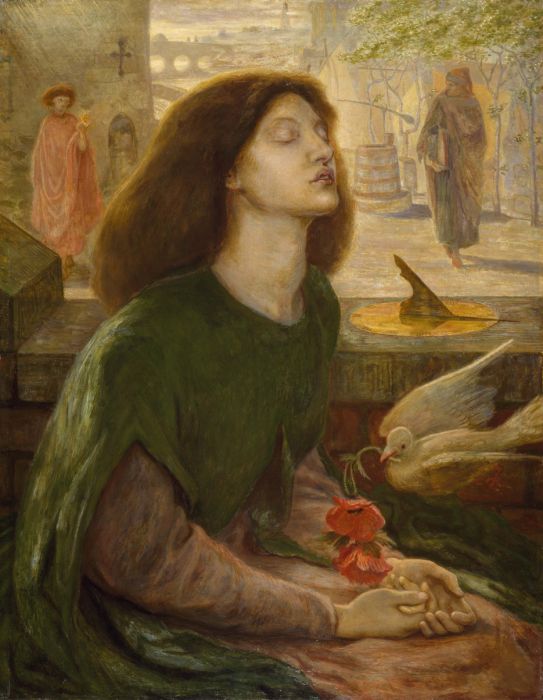Yesterday I was asked on Formspring what was the most challenging song I've learned to sing. I answered that it was a tossup between the Gounod Ave Maria and "The Finer Things" from Jane Eyre, but as I think about it, it's really no contest. That Ave Maria just fills my heart and makes me cry every time, if it's sung right.
And oh, it's that "sung right" that's the kicker. The deceptively simple melody -- based on a keyboard exercise from Bach's Well-Tempered Clavichord -- leaves the singer completely exposed, with nowhere to fudge in the slightest on breath control/support and placement. Its tessitura calls for the most support, smoothness, and control right across the passagio of my particular lyric soprano voice.
In less technical terms, there's a killer ab workout going on that the audience (ideally) never sees.
You can sing it without feeling like you've done fifty crunches, and it may very well even be pretty, but there'll be something missing. (I'm looking at you, Hayley Westenra, much as I love a lot of your stuff. Though you get closer than some.) But when the mind and body and heart are in tune, and the natural instrument is Kiri Te Kanawa's, you get this.
I haven't sung it since the Elgin Opera holiday party last December, when I had a little bit of a support issue (there's only so much I can convince those gut muscles to do what I tell them when they want to clench up because I'm cold) that led to a little bit of a pitch problem, but made my mom cry anyway. December has rolled around again, and I'm singing at Villa Verone on the 5th and the 19th, so I'm working on getting it back up again.
All my adult life, the word "resonance" has been very personal in a rather literal way -- all about the bones and spaces in my body and head, and how sound spins inside them and out into a performance space. As you can see in my previous post, my relationship with the word is growing, to encompass not just the exciting project I've gotten involved in but the principle of physics that gives the project its title.
Which is, of course, the exact same thing as that personal sense I started with. The continuum of microcosm to macrocosm, in scientific or mythic terms, has always been a fascinating concept to me, and a mental image that winds through all my creative endeavors in one way or another. So when I ran across this awesome Flash toy illustrating the scale of the universe, I thought it was the coolest thing I'd seen all month. You might or might not be as childishly gleeful about it as I was, but you should definitely check it out and play with it. Slide the control and see what those words you've heard for units -- and maybe some you've never encountered -- look like in clear, cartoony color.
I've been pulling it up to play with at least once in a day, just because it makes me smile. And in a weird way, it'll be in my mind when I'm directing breath and muscle and magic to resonate from the small spaces in my body and out into the restaurant.
Song for Today: Self-evident, of course. My all-time favorite recording is Michael Ball's. It's not perfect, or even necessarily the closest to the ideal I have in my head (and there is a very clear ideal in my head, one that no real singer has ever quite sounded like), but my emotional attachment to the piece began with his performance on the 1990 holiday album recorded by Broadway and West End performers as a benefit for Save the Children. It's interesting to me that my ideal is a purely classical soprano, but I prefer Ball's rendition to those of straight-up operatic tenors.
Dunno what that means. But I know what I like and how it makes me feel, and that's knowledge of value too.
Dunno what that means. But I know what I like and how it makes me feel, and that's knowledge of value too.




